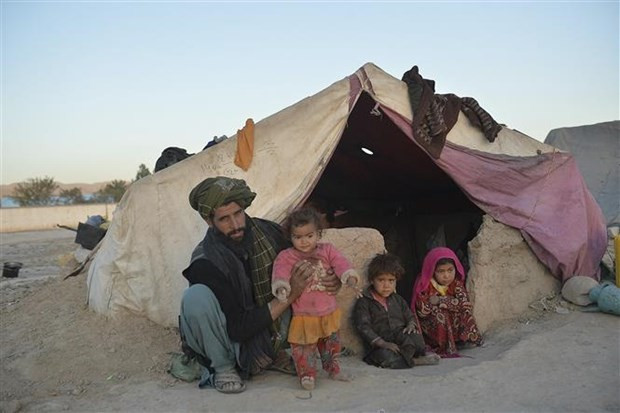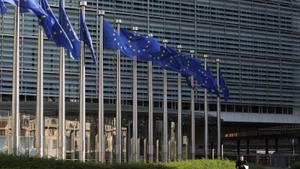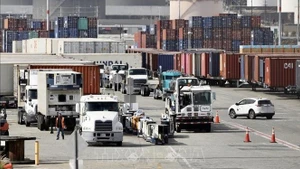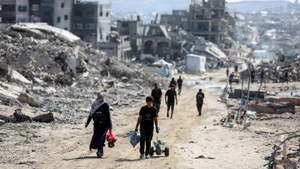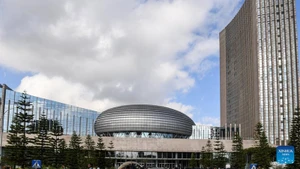In 2021, after the Taliban swept into the capital Kabul and took control of the country, hundreds of thousands of Afghans crammed aboard evacuation flights from their homeland. Two years on, people of this South Asian nation continue to flee from violence and poverty.
According to CBS News, on the border with Pakistan, thousands of Afghans are waiting in line to get their passports stamped so they can leave Afghanistan behind. On the hot and humid weather, the sight of desperate travellers passing out is all too common.
“I'm happy because I feel like I have been bailed out of jail” said 45-year-old Yousafkhel Jabar Khan.
Yousafkhel Jabar Khan is just one of millions of Afghans forced into exile in search of a better life.
According to the United Nations High Commissioner for Refugees (UNHCR), more than 1.6 million Afghans have fled the country over the past two years.
“Afghanistan’s displacement crisis is one of the largest and most protracted in UNHCR’s seven-decade history,’’ says UN High Commissioner for Refugees Filippo Grandi.
Afghanistan’s displacement crisis is one of the largest and most protracted in UNHCR’s seven-decade history.
UN High Commissioner for Refugees Filippo Grandi.
Poverty and violence are the main reasons why Afghans have decided to leave their homeland.
United Nations Secretary-General Antonio Guterres warned that Afghanistan faces "the largest humanitarian crisis" in today's world. A record 28.3 million people – some two-thirds of the population – require humanitarian and protection assistance, a huge spike from the 24.4 million people in need in 2022 and 18.4 million in early 2021.
According to UNHCR, the impact of the conflict on women and children has been particularly devastating. Malnutrition rates remain extremely high, with some 875,000 children suffering from severe acute malnutrition in 2023.
In addition, 80% of households across Afghanistan have experienced income reduction as the country enters its third consecutive year of drought-like conditions. With little functioning irrigation, Afghanistan relies on snowmelt in the mountains to keep its rivers flowing and fields watered.
However, rising temperatures due to climate change along with reduced rainfall and snowfall have resulted in low river flow. The prolonged drought has worsened the humanitarian crisis in a country where more than 30% of GDP (gross domestic product) is coming from agriculture.
In addition, according to the United Nations, bloody attacks still occur although the Taliban seized power with a commitment not to let Afghanistan become a safe haven for international terrorists.
The United Nations Assistance Mission in Afghanistan (UNAMA) stressed that security challenges continue to exist. More than 1,000 Afghan civilians have been killed in bombings and violence since 2021.
In addition to poverty and violence, the fundamental rights of Afghan women and girls are also among the burning issues. In Afghanistan, women are barred from most employment and from attending university, while most girls' high schools are closed. Many restrictions on women's freedom of movement have also been put in place.
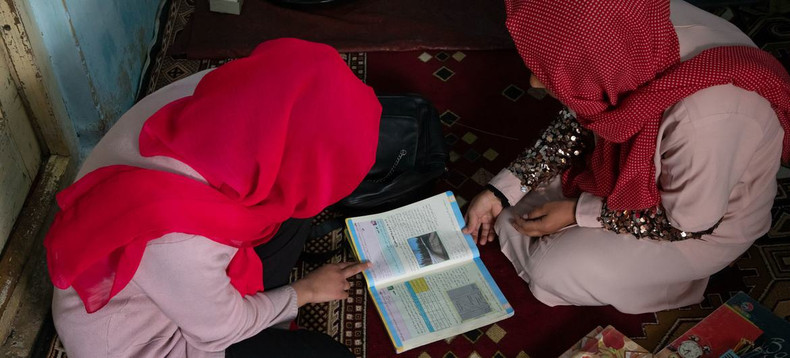 |
| An Afghan girl studies at home with the help of her father after being denied the right to carry on studying at school. (Photo: UNICEF) |
Since August 2021, at least 50 decrees constraining women's opportunities and civil liberties have been issued. Notably, this April, Afghan women were banned from working for NGOs to the United Nations' mission throughout the country.
Sima Sami Bahous, UN Women Executive Director, stressed that the above-mentioned restrictive measures could severely affect about 2 million women in the country.
According to analysts, harsh regulations on women and girls are one of the leading reasons for the interruption of foreign aid to Afghanistan.
According to the United Nations Development Programme (UNDP), a sustained inflow of foreign aid, of around 3.7 billion USD in 2022 has helped “avert the total collapse of Afghanistan”.
However, the UN’s humanitarian response plan quantifies the need for lifesaving assistance in the country at $3.23bn. As of the start of August, less than 25% of this figure has been raised. This is not enough to sustain relief for a country where the majority of the population lives in poverty.
According to the United Nations, on the positive side, over the past two years, corruption in Afghanistan has been reduced. A ban against cultivation of opium poppy was enacted, resulting in a significant reduction in drug trade.
However, the security situation, the rights of women and girls, as well as the humanitarian crisis in this country remain dark clouds over hope for a better future for the people of Afghanistan.
